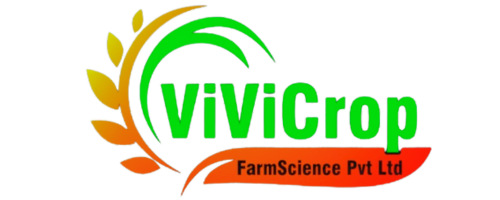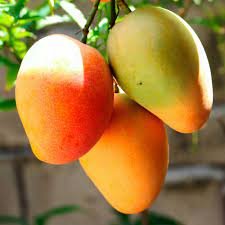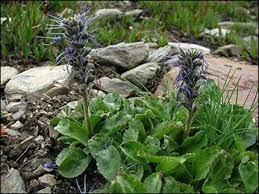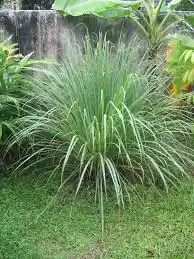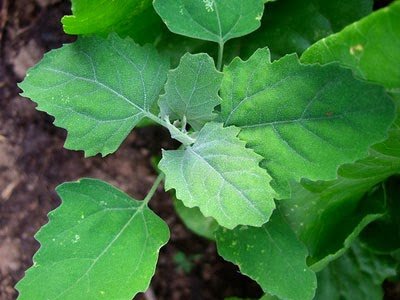Ramie (Boehmeria nivea) Nutrition Requirements
Nutrition required by
at each stage of its life cycle.
SOIL PREPARATION
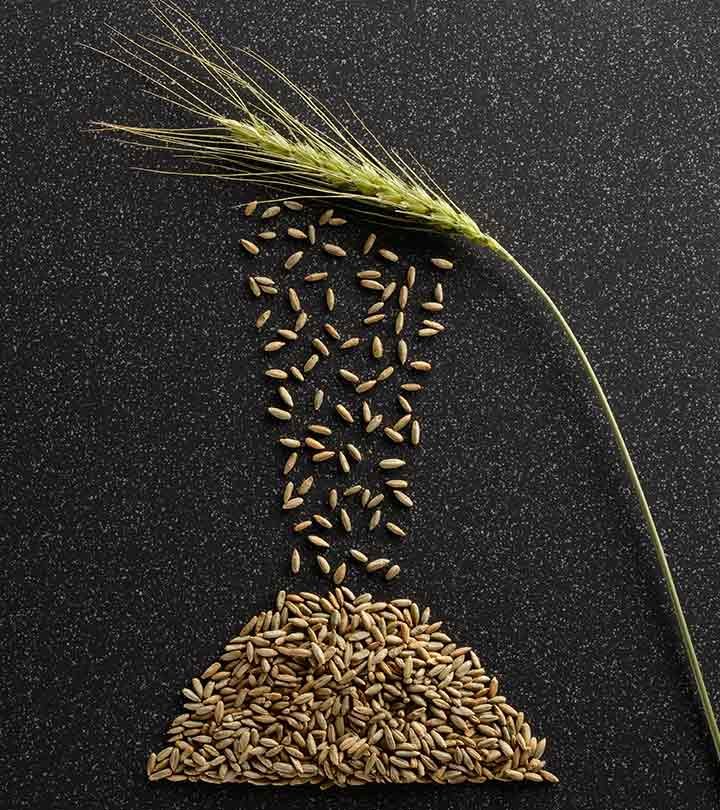
Soil Preparation
Ramie (Boehmeria nivea) is a perennial herbaceous plant cultivated for its strong and durable fibers.
Here's a general outline of soil preparation methods and nutrition requirements at the soil preparation stage for ramie cultivation:
Soil Preparation Method:
1. **Site Selection:**
Choose a well-drained site with loamy or sandy loam soil for ramie cultivation.
2. **Land Preparation:**
Clear the land of weeds, debris, and rocks. Plow the soil to a depth of about 20-30 cm to loosen it and facilitate root penetration.
3. **Soil Testing:**
Conduct soil tests to determine soil pH and nutrient levels. Ramie thrives in slightly acidic to neutral soil (pH 6.0-7.5).
4. **Soil Amendments:**
Based on soil test results, amend the soil with organic matter such as compost or well-rotted manure to improve soil structure and fertility.
5. **Tillage:**
Perform secondary tillage using disc harrows or cultivators to further break up soil clods and create a fine seedbed.
6. **Bed Formation:**
Form raised beds or ridges to improve soil drainage and create suitable growing conditions for ramie.
Nutrition Requirement at Soil Preparation Stage:
1. **Nitrogen (N):**
Incorporate nitrogen-rich organic amendments such as compost or poultry manure into the soil during soil preparation. Nitrogen promotes vegetative growth and enhances ramie fiber quality.
2. **Phosphorus (P):**
Phosphorus is essential for root development and overall plant vigor. Incorporate phosphorus-rich fertilizers such as rock phosphate or bone meal into the soil during soil preparation.
3. **Potassium (K):**
Potassium plays a crucial role in promoting flowering and fruiting in ramie plants. Ensure an adequate supply of potassium by incorporating potassium-rich fertilizers such as potassium sulfate or potassium chloride into the soil.
4. **Micronutrients:**
Conduct soil tests to assess the availability of micronutrients such as iron, manganese, zinc, and copper. Address any deficiencies by incorporating micronutrient-rich fertilizers or foliar sprays as needed.
It's essential to follow recommended fertilizer application rates and practices based on soil test results to avoid nutrient imbalances and ensure optimal growth and fiber production in ramie plants. Additionally, proper irrigation management and weed control are crucial for successful ramie cultivation during the soil preparation stage.
Early Growth (Germination to Establishment)

Early Growth
During the early growth stage (germination to establishment) of ramie (Boehmeria nivea) cultivation, providing appropriate nutrition is essential for promoting vigorous vegetative growth and establishing healthy plants.
Here are the nutrition requirements for ramie during this stage:
1. **Nitrogen (N):**
- Nitrogen is crucial for promoting early vegetative growth and the development of healthy leaves in ramie plants.
- Apply nitrogen fertilizer at a rate of approximately 50-60 kg/ha or as recommended based on soil test results.
- Split nitrogen applications into multiple doses to ensure a steady supply throughout the early growth stage.
2. **Phosphorus (P):**
- Phosphorus plays a vital role in root development and early plant establishment.
- Apply phosphorus fertilizer at a rate of approximately 30-40 kg/ha or as recommended based on soil test results.
- Incorporate phosphorus fertilizer into the soil during the soil preparation stage or apply as a side-dressing during early growth.
3. **Potassium (K):**
- Potassium is essential for overall plant vigor and stress tolerance during the early growth stage.
- Apply potassium fertilizer at a rate of approximately 40-50 kg/ha or as recommended based on soil test results.
- Incorporate potassium fertilizer into the soil during the soil preparation stage or apply as a side-dressing during early growth.
4. **Micronutrients:**
- Ensure an adequate supply of micronutrients such as iron, manganese, zinc, and copper, which are essential for various metabolic processes in ramie plants.
- Conduct soil tests to assess micronutrient levels and address any deficiencies through soil amendments or foliar applications as needed.
5. **Calcium (Ca) and Magnesium (Mg):**
- Calcium and magnesium are important secondary nutrients that contribute to overall plant health and growth.
- Ensure that soil pH is within the optimal range (6.0-7.5) to promote the availability of calcium and magnesium to ramie plants.
- Address any calcium or magnesium deficiencies through soil amendments or foliar applications as recommended based on soil test results.
6. **Water and Irrigation:**
- Adequate water supply is crucial for promoting early growth and establishment of ramie plants.
- Ensure consistent soil moisture levels by providing irrigation as needed, especially during dry periods.
- Avoid waterlogged conditions, as excessive moisture can lead to root rot and other issues.
By providing the appropriate nutrition, including nitrogen, phosphorus, potassium, micronutrients, and maintaining optimal soil moisture levels, growers can promote healthy early growth and establishment of ramie plants, setting the stage for successful cultivation. Regular monitoring of plant growth and nutrient status is important for making adjustments to fertilizer applications as needed.
Tillering Stage (Shoot Development)

Tillering Stage
During the tillering stage (shoot development) of ramie (Boehmeria nivea) cultivation, the nutritional requirements shift to support continued vegetative growth and the development of multiple shoots.
Here are the nutrition requirements for ramie during this stage:
1. **Nitrogen (N):**
- Nitrogen remains essential during the tillering stage to support robust shoot development and leaf expansion.
- Apply nitrogen fertilizer at a rate of approximately 60-80 kg/ha or as recommended based on soil test results.
- Split nitrogen applications into multiple doses to ensure a continuous supply throughout the tillering stage.
2. **Phosphorus (P):**
- Phosphorus continues to be important for root development and overall plant vigor during the tillering stage.
- Apply phosphorus fertilizer at a rate of approximately 40-50 kg/ha or as recommended based on soil test results.
- Incorporate phosphorus fertilizer into the soil or apply as a side-dressing to ensure availability to developing roots and shoots.
3. **Potassium (K):**
- Potassium plays a crucial role in promoting shoot development, enhancing plant tolerance to environmental stresses, and improving fiber quality.
- Apply potassium fertilizer at a rate of approximately 60-80 kg/ha or as recommended based on soil test results.
- Incorporate potassium fertilizer into the soil or apply as a side-dressing to ensure optimal potassium levels for shoot development.
4. **Micronutrients:**
- Ensure an adequate supply of micronutrients such as iron, manganese, zinc, and copper to support various metabolic processes during shoot development.
- Monitor soil micronutrient levels and address any deficiencies through soil amendments or foliar applications as needed.
5. **Calcium (Ca) and Magnesium (Mg):**
- Calcium and magnesium continue to be important for cell wall development and overall plant health during the tillering stage.
- Maintain optimal soil pH (6.0-7.5) to promote the availability of calcium and magnesium to ramie plants.
- Address any calcium or magnesium deficiencies through soil amendments or foliar applications as recommended based on soil test results.
6. **Water and Irrigation:**
- Adequate water supply is crucial for supporting vigorous shoot development and tillering in ramie plants.
- Provide regular irrigation to maintain consistent soil moisture levels, especially during dry periods, to promote healthy shoot growth.
By meeting the nutritional requirements outlined above and maintaining optimal soil moisture levels, growers can support vigorous shoot development and tillering in ramie plants during the tillering stage, ultimately leading to higher fiber yields and quality. Regular monitoring of plant growth and nutrient status is essential for making adjustments to fertilizer applications as needed.
Flowering

Flowering
During the flowering stage of ramie (Boehmeria nivea) cultivation, the plant's nutritional requirements shift to support the development of flowers and seed production.
Here are the key nutrition requirements for ramie during the flowering stage:
1. **Nitrogen (N):**
- Nitrogen is important for supporting flower development and enhancing seed production in ramie plants.
- Apply nitrogen fertilizer at a rate of approximately 80-100 kg/ha or as recommended based on soil test results.
- Ensure a continuous supply of nitrogen to support flower formation and seed set.
2. **Phosphorus (P):**
- Phosphorus remains essential during the flowering stage to support flower initiation, pollination, and seed development.
- Apply phosphorus fertilizer at a rate of approximately 50-60 kg/ha or as recommended based on soil test results.
- Ensure phosphorus availability to promote healthy flower development and seed formation.
3. **Potassium (K):**
- Potassium plays a crucial role in flower and seed development, as well as improving the quality of seeds in ramie plants.
- Apply potassium fertilizer at a rate of approximately 80-100 kg/ha or as recommended based on soil test results.
- Ensure an adequate supply of potassium to support flower and seed development during the flowering stage.
4. **Calcium (Ca) and Magnesium (Mg):**
- Calcium and magnesium are important for flower and seed development, as well as overall plant health.
- Maintain optimal soil pH (6.0-7.5) to promote the availability of calcium and magnesium to ramie plants.
- Address any calcium or magnesium deficiencies through soil amendments or foliar applications as recommended based on soil test results.
5. **Micronutrients:**
- Ensure an adequate supply of micronutrients such as iron, manganese, zinc, and copper to support flower and seed development.
- Monitor soil micronutrient levels and address any deficiencies through soil amendments or foliar applications as needed.
6. **Water and Irrigation:**
- Adequate water supply is crucial during the flowering stage to support flower development, pollination, and seed formation.
- Provide regular irrigation to maintain consistent soil moisture levels, especially during dry periods, to promote successful flower and seed development.
By meeting the nutritional requirements outlined above and maintaining optimal soil moisture levels, growers can support healthy flower development and seed production in ramie plants during the flowering stage, ultimately leading to successful seed yield. Regular monitoring of plant growth and nutrient status is essential for making adjustments to fertilizer applications as needed.
Matchuration & Ripening

Matchuration & Ripening
During the maturation and ripening stage of ramie (Boehmeria nivea) cultivation, the plant's nutritional requirements focus on supporting seed development, maturation, and overall plant health as the crop prepares for harvest.
Here are the key nutrition requirements for ramie during the maturation and ripening stage:
1. **Nitrogen (N):**
- Nitrogen is important for supporting seed filling and maturation during the ripening stage.
- Apply nitrogen fertilizer at a reduced rate compared to earlier growth stages, typically around 40-60 kg/ha or as recommended based on soil test results.
- Adjust nitrogen applications to avoid excessive vegetative growth and promote efficient seed filling and maturation.
2. **Phosphorus (P):**
- Phosphorus continues to be essential for supporting seed development and maturation during the ripening stage.
- Apply phosphorus fertilizer at a rate of approximately 30-50 kg/ha or as recommended based on soil test results.
- Ensure phosphorus availability to support optimal seed filling and maturation.
3. **Potassium (K):**
- Potassium plays a crucial role in promoting seed development, maturation, and improving seed quality during the ripening stage.
- Apply potassium fertilizer at a rate of approximately 50-80 kg/ha or as recommended based on soil test results.
- Ensure an adequate supply of potassium to support seed filling, maturation, and enhance seed quality.
4. **Calcium (Ca) and Magnesium (Mg):**
- Calcium and magnesium are important for seed development, maturation, and overall plant health during the ripening stage.
- Maintain optimal soil pH (6.0-7.5) to promote the availability of calcium and magnesium to ramie plants.
- Address any calcium or magnesium deficiencies through soil amendments or foliar applications as recommended based on soil test results.
5. **Micronutrients:**
- Ensure an adequate supply of micronutrients such as iron, manganese, zinc, and copper to support seed development, maturation, and overall plant health during the ripening stage.
- Monitor soil micronutrient levels and address any deficiencies through soil amendments or foliar applications as needed.
6. **Water and Irrigation:**
- Adequate water supply is crucial during the ripening stage to support seed filling, maturation, and overall plant health.
- Provide regular irrigation to maintain consistent soil moisture levels, especially during dry periods, to promote successful seed development and maturation.
By meeting the nutritional requirements outlined above and maintaining optimal soil moisture levels, growers can support healthy seed development, maturation, and overall plant health during the ripening stage of ramie cultivation, ultimately leading to successful seed yield and quality. Regular monitoring of plant growth and nutrient status is essential for making adjustments to fertilizer applications as needed.
Harvesting

Harvesting
During the harvesting stage of ramie (Boehmeria nivea) cultivation, the focus shifts from nutrient application to proper harvesting techniques to ensure optimal fiber quality and yield.
Here are the key considerations and procedures to be followed during the harvesting stage:
1. **Harvest Timing:**
- Harvesting of ramie fiber is typically done when the plants are in full bloom or at the beginning of seed formation.
- Timing is critical to ensure that the fiber is at the peak of its quality and strength.
2. **Harvesting Technique:**
- Ramie fibers are extracted from the stem of the plant. The stems are cut close to the ground to obtain the longest and highest-quality fibers.
- Use sharp cutting tools to ensure clean cuts and minimize damage to the fibers.
3. **Retting Process:**
- After harvesting, the stems undergo a retting process to separate the fibers from the woody core (boon).
- Retting can be done through various methods, including water retting, dew retting, or chemical retting.
- Water retting involves submerging the harvested stems in water for several days to allow natural bacteria to break down the non-fibrous tissues.
- Dew retting involves spreading the harvested stems on the ground and allowing dew and microbial activity to facilitate fiber separation.
- Chemical retting involves treating the harvested stems with chemicals to accelerate the retting process.
4. **Drying:**
- After retting, the fibers are washed to remove impurities and then dried thoroughly to prevent mold growth and ensure long-term storage.
- Drying can be done naturally in the sun or using mechanical drying methods.
5. **Storage:**
- Once dried, the fibers are bundled and stored in a dry, well-ventilated area to prevent moisture buildup and mold growth.
- Proper storage conditions help maintain the quality of the fibers until further processing.
6. **Post-Harvest Nutrition:**
- While the focus during the harvesting stage is on harvesting techniques and post-harvest processing, it's essential to consider the nutritional needs of the remaining plant residues.
- Return any unused plant residues to the soil as organic matter to replenish soil nutrients and support future crop growth.
By following these procedures and considerations during the harvesting stage of ramie cultivation, growers can ensure the production of high-quality fibers and maintain soil fertility for subsequent crops. Proper harvesting techniques and post-harvest processing are crucial for maximizing fiber yield and quality.
Ramie (Boehmeria nivea) Farming Economics
Get details of Profitability and cost estimate in growing Ramie (Boehmeria nivea) per acres of Land.
SOIL PREPARATION
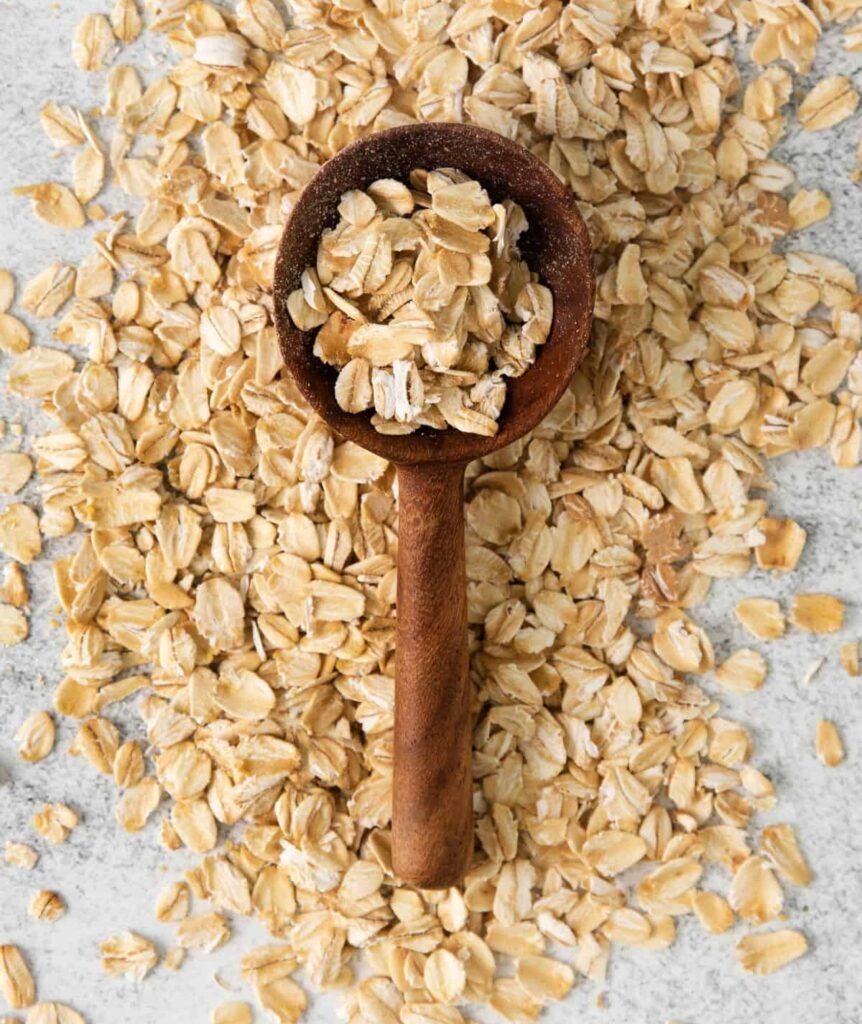
Soil Preparation
Early Growth (Germination to Establishment)

Early Growth
Tillering Stage (Shoot Development)

Tillering Stage
Flowering

Flowering
Matchuration & Ripening

Matchuration & Ripening
Harvesting

Harvesting
Ramie (Boehmeria nivea) Disease Details
Nutrition required by Ramie (Boehmeria nivea) at each stage of its life cycle.
SOIL PREPARATION

Soil Preparation
During the soil preparation stage for ramie cultivation, several diseases and pests can occur. Some common ones include:
1. **Fungal Diseases:**
Fungi thrive in moist soil conditions. Diseases like root rot (caused by various fungi such as Rhizoctonia spp., Pythium spp., and Fusarium spp.) and damping-off (caused by Pythium spp. and Rhizoctonia spp.) can affect ramie plants during soil preparation.
2. **Bacterial Diseases:**
Bacterial diseases such as bacterial wilt (caused by Ralstonia solanacearum) can also affect ramie plants during soil preparation if the bacteria are present in the soil.
3. **Nematodes:**
Plant-parasitic nematodes such as root-knot nematodes (Meloidogyne spp.) can infest the soil and damage ramie roots during the soil preparation stage.
4. **Weeds:**
Weeds can compete with ramie plants for nutrients, water, and sunlight, reducing their growth and yield.
To prevent these diseases and pests during soil preparation for ramie cultivation, the following precautions can be taken:
1. **Soil Sterilization:**
Sterilizing the soil using solarization or steam treatment can help kill pathogens, pests, and weed seeds present in the soil.
2. **Crop Rotation:**
Practicing crop rotation with non-host plants for pathogens and pests can help break their life cycles and reduce their population in the soil.
3. **Sanitation:**
Ensuring cleanliness and sanitation of tools and equipment used for soil preparation can prevent the spread of pathogens from infected to healthy plants.
4. **Use of Resistant Varieties:**
Planting ramie varieties that are resistant or tolerant to common diseases and pests can reduce the risk of infection.
5. **Proper Drainage:**
Ensuring proper soil drainage can help prevent waterlogging, which creates favorable conditions for fungal diseases.
6. **Weed Control:**
Implementing effective weed control measures such as mulching, hand weeding, or using herbicides can reduce competition from weeds.
7. **Nematode Management:**
Soil fumigation with nematicides or planting nematode-resistant varieties can help manage nematode populations in the soil.
8. **Monitoring and Early Detection:**
Regular monitoring of plants for signs of disease or pest infestation during soil preparation can facilitate early detection and prompt management.
By following these precautions, growers can minimize the risk of diseases and pests during the soil preparation stage and promote healthy ramie growth.
Early Growth (Germination to Establishment)

Early Growth
During the early growth stage (germination to establishment) of ramie cultivation, several diseases and pests can affect the crop. Here are some common ones and the precautions to prevent them:
1. **Damping-off:**
- Damping-off is a fungal disease that affects seedlings, causing them to wilt, collapse, and die at the soil line.
**Precautions:**
- Use disease-free planting material.
- Ensure proper drainage to prevent waterlogged conditions, which favor fungal diseases.
- Avoid overwatering and maintain appropriate soil moisture levels.
- Apply fungicide-treated seeds or soil drenches if necessary, following label instructions and safety precautions.
2. **Seedling Diseases:**
- Various fungal pathogens can infect ramie seedlings, causing rotting, discoloration, and stunted growth.
**Precautions:**
- Use high-quality seeds from reputable sources.
- Practice seed treatment with fungicides or biocontrol agents before sowing.
- Ensure proper ventilation and spacing to reduce humidity levels around seedlings.
3. **Pests:**
- Insect pests such as cutworms, flea beetles, and aphids can damage ramie seedlings, affecting their growth and establishment.
**Precautions:**
- Monitor fields regularly for signs of pest infestation.
- Implement physical barriers or traps to protect seedlings from pests.
- Use insecticidal sprays or natural predators to control pest populations if necessary.
4. **Weed Competition:**
- Weeds can compete with ramie seedlings for nutrients, water, and sunlight, hindering their growth and establishment.
**Precautions:**
- Clear the field of weeds before planting ramie.
- Use mulch or cover crops to suppress weed growth.
- Implement mechanical or manual weed control methods.
- Use pre-emergent or post-emergent herbicides as needed, following label instructions and safety precautions.
5. **Nutrient Deficiencies:**
- Inadequate nutrient availability can stunt the growth of ramie seedlings and affect their establishment.
**Precautions:**
- Conduct soil tests to assess nutrient levels and pH.
- Amend soils with organic matter and balanced fertilizers to provide essential nutrients.
- Monitor plant growth and appearance for signs of nutrient deficiencies and adjust fertilizer applications accordingly.
By implementing these precautions and following best practices during the early growth stage, growers can mitigate the risk of diseases and pests in ramie cultivation, ensuring healthy seedling establishment and vigorous crop growth. Regular monitoring and timely intervention are crucial to address any issues that may arise during this critical stage of plant development.
Tillering Stage (Shoot Development)

Tillering Stage
During the tillering stage (shoot development) of ramie cultivation, several diseases and pests can affect the crop. Here are some common ones and the precautions to prevent them:
1. **Leaf Spot Diseases:**
- Various fungal pathogens can cause leaf spot diseases in ramie, leading to the development of circular or irregular lesions on the leaves.
**Precautions:**
- Practice crop rotation to reduce the buildup of fungal pathogens in the soil.
- Ensure proper spacing between plants to promote air circulation and reduce humidity around the leaves.
- Apply fungicides preventively or at the first signs of disease, following label instructions and safety precautions.
2. **Stem Rot:**
- Stem rot is a fungal disease that affects the stems of ramie plants, causing them to rot and weaken, ultimately leading to plant collapse.
**Precautions:**
- Avoid overwatering and maintain proper soil drainage to prevent waterlogged conditions, which favor fungal diseases.
- Remove and destroy infected plant debris to prevent the spread of the disease.
- Apply fungicides preventively or at the first signs of disease, following label instructions and safety precautions.
3. **Insect Pests:**
- Insect pests such as aphids, caterpillars, and leafhoppers can feed on ramie leaves and stems, affecting plant health and growth.
**Precautions:**
- Monitor fields regularly for signs of pest infestation.
- Implement integrated pest management (IPM) practices, including cultural and biological control methods.
- Use insecticidal sprays or natural predators to control pest populations if necessary, following label instructions and safety precautions.
4. **Nutrient Deficiencies:**
- Nutrient deficiencies can occur during the tillering stage, affecting the growth and development of ramie shoots.
**Precautions:**
- Conduct soil tests to assess nutrient levels and pH.
- Amend soils with organic matter and balanced fertilizers to provide essential nutrients.
- Monitor plant growth and appearance for signs of nutrient deficiencies and adjust fertilizer applications accordingly.
5. **Weed Competition:**
- Weeds can compete with ramie plants for nutrients, water, and sunlight, hindering shoot development and growth.
**Precautions:**
- Implement effective weed control measures, including manual or mechanical weed removal and the use of herbicides as needed, following label instructions and safety precautions.
- Use mulch or cover crops to suppress weed growth and conserve soil moisture.
By implementing these precautions and following best practices during the tillering stage, growers can mitigate the risk of diseases and pests in ramie cultivation, ensuring healthy shoot development and vigorous plant growth. Regular monitoring and timely intervention are essential to address any issues that may arise during this critical stage of crop development.
Flowering

Flowering
During the flowering stage of ramie cultivation, several diseases and pests can affect the crop. Here are some common ones and the precautions to prevent them:
1. **Powdery Mildew:**
- Powdery mildew is a fungal disease that appears as white powdery spots on the leaves, stems, and flowers of ramie plants, leading to reduced photosynthesis and plant vigor.
**Precautions:**
- Ensure proper air circulation by spacing plants appropriately and avoiding overcrowding.
- Avoid overhead irrigation to minimize leaf wetness.
- Apply fungicides preventively or at the first signs of disease, following label instructions and safety precautions.
2. **Fusarium Wilt:**
- Fusarium wilt is a fungal disease that affects the vascular system of ramie plants, causing wilting, yellowing of leaves, and plant death.
**Precautions:**
- Plant resistant varieties of ramie, if available.
- Practice crop rotation to reduce the buildup of Fusarium pathogens in the soil.
- Ensure proper soil drainage to prevent waterlogged conditions, which favor Fusarium wilt.
- Remove and destroy infected plants to prevent the spread of the disease.
3. **Insect Pests:**
- Insect pests such as aphids, thrips, and beetles can feed on ramie flowers and buds, affecting pollination and seed production.
**Precautions:**
- Monitor fields regularly for signs of pest infestation.
- Implement integrated pest management (IPM) practices, including cultural and biological control methods.
- Use insecticidal sprays or natural predators to control pest populations if necessary, following label instructions and safety precautions.
4. **Botrytis Blight:**
- Botrytis blight, or gray mold, is a fungal disease that affects flowers and buds, causing them to turn brown and decay.
**Precautions:**
- Maintain proper plant spacing and air circulation to reduce humidity levels around flowers and buds.
- Remove and destroy infected plant material to prevent the spread of the disease.
- Apply fungicides preventively or at the first signs of disease, following label instructions and safety precautions.
5. **Nutrient Deficiencies:**
- Nutrient deficiencies during the flowering stage can affect flower development and seed production in ramie plants.
**Precautions:**
- Conduct soil tests to assess nutrient levels and pH.
- Amend soils with organic matter and balanced fertilizers to provide essential nutrients.
- Monitor plant growth and appearance for signs of nutrient deficiencies and adjust fertilizer applications accordingly.
By implementing these precautions and following best practices during the flowering stage, growers can mitigate the risk of diseases and pests in ramie cultivation, ensuring successful flower development and seed production. Regular monitoring and timely intervention are essential to address any issues that may arise during this critical stage of crop development.
Matchuration & Ripening

Matchuration & Ripening
During the maturation and ripening stage of ramie cultivation, several diseases and pests can affect the crop. Here are some common ones and the precautions to prevent them:
1. **Sclerotinia Rot:**
- Sclerotinia rot, caused by the fungus Sclerotinia sclerotiorum, can affect the stems and leaves of ramie plants during the maturation stage, leading to wilting, rotting, and plant death.
**Precautions:**
- Ensure proper soil drainage to prevent waterlogging, which can promote fungal growth.
- Avoid excessive irrigation, especially during periods of high humidity.
- Remove and destroy infected plant material to prevent the spread of the disease.
- Apply fungicides preventively or at the first signs of disease, following label instructions and safety precautions.
2. **Pod and Seed Diseases:**
- Various fungal pathogens can cause diseases such as pod blight and seed rot in ramie plants during the maturation and ripening stage, affecting seed quality and yield.
**Precautions:**
- Practice crop rotation to reduce the buildup of fungal pathogens in the soil.
- Provide adequate spacing between plants to promote air circulation and reduce humidity.
- Remove and destroy infected pods and seeds to prevent the spread of the disease.
- Apply fungicides preventively or at the first signs of disease, following label instructions and safety precautions.
3. **Insect Pests:**
- Insect pests such as aphids, caterpillars, and beetles can feed on mature ramie plants, affecting seed production and quality.
**Precautions:**
- Monitor fields regularly for signs of pest infestation.
- Implement integrated pest management (IPM) practices, including cultural and biological control methods.
- Use insecticidal sprays or natural predators to control pest populations if necessary, following label instructions and safety precautions.
4. **Nutrient Deficiencies:**
- Nutrient deficiencies during the maturation and ripening stage can affect seed development and quality in ramie plants.
**Precautions:**
- Conduct soil tests to assess nutrient levels and pH.
- Amend soils with organic matter and balanced fertilizers to provide essential nutrients.
- Monitor plant growth and appearance for signs of nutrient deficiencies and adjust fertilizer applications accordingly.
By implementing these precautions and following best practices during the maturation and ripening stage, growers can mitigate the risk of diseases and pests in ramie cultivation, ensuring successful seed development and quality. Regular monitoring and timely intervention are essential to address any issues that may arise during this critical stage of crop development.
Harvesting

Harvesting
During the harvesting stage of ramie cultivation, several diseases and pests can affect the crop. Here are some common ones and the precautions to prevent them:
1. **Stem Rot:**
- Stem rot, caused by fungal pathogens such as Fusarium spp. and Rhizoctonia spp., can occur during the harvesting stage, leading to the decay of ramie stems.
**Precautions:**
- Harvest ramie plants during dry weather to minimize the risk of fungal infections.
- Avoid injuring stems during harvesting to prevent entry points for pathogens.
- Properly sanitize harvesting tools and equipment to prevent the spread of fungal spores.
2. **Seedborne Diseases:**
- Seedborne diseases such as seed rot and seedling blight can affect harvested ramie seeds, reducing seed quality and viability.
**Precautions:**
- Ensure that harvested seeds are free from visible signs of disease or damage.
- Store harvested seeds in dry and well-ventilated conditions to prevent fungal growth.
- Treat seeds with fungicides or hot water treatments if necessary to eliminate pathogens.
3. **Insect Pests:**
- Insect pests such as storage beetles and moths can infest harvested ramie seeds, leading to damage and loss of quality.
**Precautions:**
- Store harvested seeds in clean and sealed containers to prevent access by insect pests.
- Use insect-proof storage facilities or containers equipped with insect traps or repellents.
- Regularly inspect stored seeds for signs of pest infestation and take appropriate measures to control them.
4. **Post-Harvest Deterioration:**
- Post-harvest deterioration due to improper handling and storage practices can lead to losses in ramie quality and seed viability.
**Precautions:**
- Handle harvested ramie plants and seeds with care to avoid physical damage.
- Dry harvested seeds thoroughly before storage to reduce moisture content and prevent fungal growth.
- Store harvested ramie plants and seeds in cool, dry, and well-ventilated conditions to maintain quality and viability.
By implementing these precautions and following best practices during the harvesting stage, growers can minimize the risk of diseases and pests in ramie cultivation, ensuring high-quality harvests and seed yields. Regular monitoring and proper post-harvest management are essential to preserve the quality and viability of harvested ramie plants and seeds.
